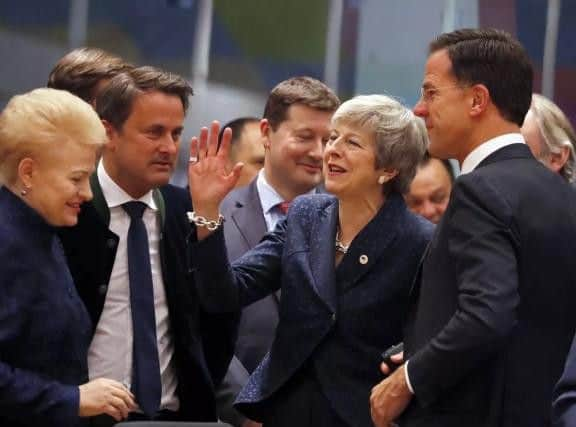Brexit: How the 'flextension' deal was reached and what happens now
The UK may have just taken part in its last EU Council summit, and the symbolism was inflicted on the British press pack.
Its usual seats at the heart of the summit press hall were snapped up by Chinese journalists in Brussels as Xi Jinping tours Europe. The EU wanted to talk about its bright future - those writing about the awkward present were shunted into a hot, stuffy side room.
Advertisement
Hide AdAdvertisement
Hide AdRight up to the moment Theresa May sat down to ask them for a Brexit extension, EU leaders had talked tough: any delay would have conditions, and would be final. Take it or leave it - we’re washing our hands.


But during a 90 minute grilling, the Prime Minister failed to convince them she had any clear plan of what to do if her deal was voted down by MPs again next week. So EU leaders stepped in and wrote one for her.
The EU27 took another five hours to hammer out the ‘flextension’ agreed late on Thursday night, with leaders tearing up their own proposal and getting stuck into the drafting of a new one. In the back and forth, several different suggestions leaked out over the course of the evening.
In the end, it was Brexit that pushed China off the agenda, with talks over dinner replaced by more wrangling about Article 50. May had been due to eat with fellow leaders; instead, summit organisers offered to send the menu of lentil and langoustine terrine and roasted duckling over for her to eat alone.
The UK’s future was set without its Prime Minister in the room, not because EU bureaucrats wanted it that way, but because its own government offered no alternative.
A no deal Brexit remains a strong possibility, and the EU has designed a scheme that seeks to leave it out of the blame game that would follow. It gives pro-EU forces in parliament two extra weeks to mobilise, and left the door open to a long delay if they can agree on a clear alternative to the Prime Minister’s deal.
One of the most significant things to emerge overnight was how open EU Council President Donald Tusk was about his desire to see the UK change its mind on Brexit.
“I am very satisfied, especially that we still have so many options open,” he said in a midnight press conference, adding with a smile: “You know what my personal view is on this.” He later went even further in a briefing with Polish media, saying he wanted the UK to “consider all possible options” - which include revoking Article 50.
Advertisement
Hide AdAdvertisement
Hide AdThe question now is what parliament does with its two week window. Next week, MPs will mount yet another bid to take control of the order paper, so that they can finally vote on alternatives to the government’s Brexit deal. A softer exit inside the single market and customs union, and a second EU referendum are likely to feature. The government will try to bring back its deal, but few have any expectation it will succeed.
Meanwhile at Westminster, calls from her own party for the Prime Minister to step aside continue to grow. It may have only been Theresa May’s last Brussels summit.
